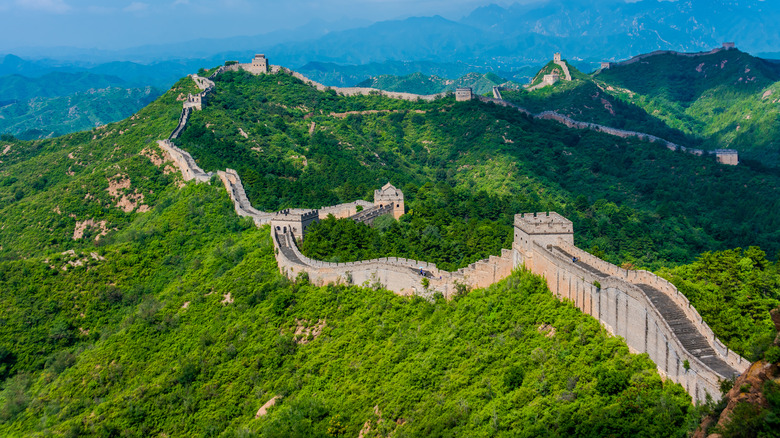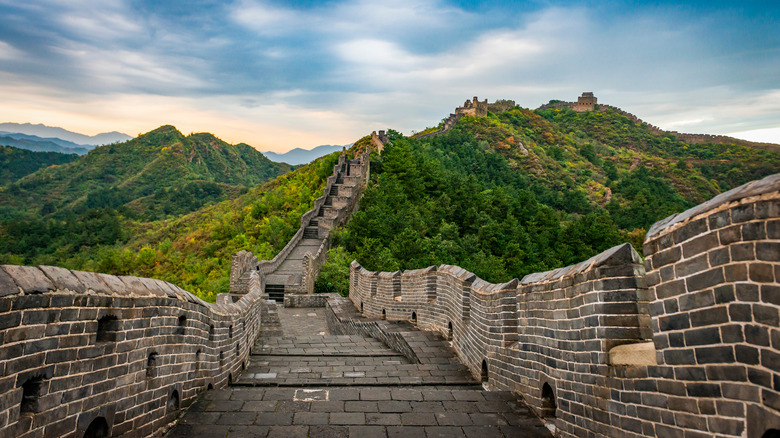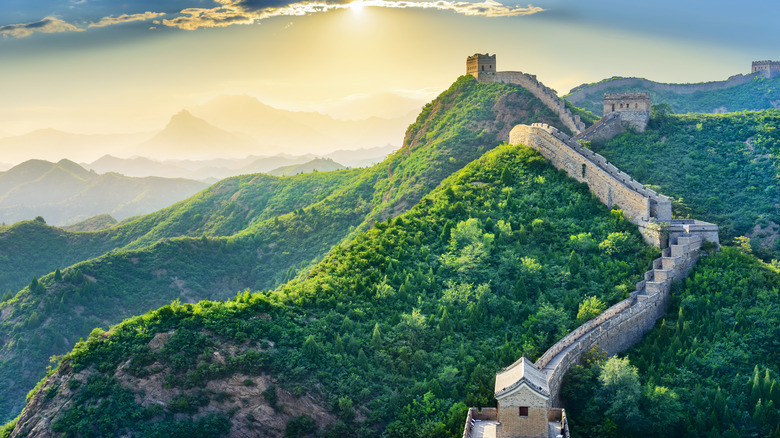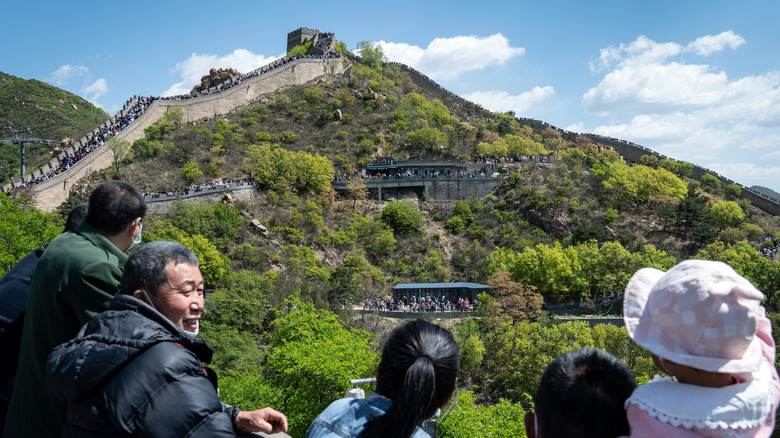Here's How Many People Died Building The Great Wall Of China
Roughly 2,500 years ago, the Chinese territory was a war-like place, threatened repeatedly by roving bands of nomads, particularly from the north. For centuries, Chinese leaders built walls all over the region to protect their land and their people, only some of which survive today. According to the National Geographic Society, China was united by Qin Shi Huang, sometimes called the First Emperor, in around the third century B.C. The First Emperor proposed joining these walls for even better protection — a project added on to hundreds of years later, lasting all throughout the Ming Dynasty, and led by Zhu Yuanzhang, the Hongwu Emperor.
Portions of this Ming Dynasty-era engineering feat still stand today, known by many as the Great Wall of China. Erected without any modern technology, the Great Wall is a testament to human strength and ingenuity. A dark side to the story is how many people died while building the wall. Learning who labored on the project, as well as how many died — including the unusual place in which they might be buried — adds a fascinating human element to this modern marvel from the ancient world.
How it was built
According to Britannica, the Great Wall is not a single wall, but instead, a number of walls running parallel to one another, spanning northern China and the Mongolian south. In a mix of earth and stone walls, ditches, and moats, most of what's still standing came about in the Ming Dynasty, at a length of about 3,400 miles and reaching heights of 15 to 30 feet, per the National Geographic Society. Over the years, brick, granite, and marble were also used in sections of the wall, and fortifications and defensive positions were dotted throughout, including platforms and watchtowers.
Over the years, portions of the wall were built, extended, and repaired. The Tang Dynasty, however, was a peaceful time in China, and the wall lost its military function, falling into misuse and disrepair, according to History. Beginning in the 18th century, though, what remained of the Great Wall came to symbolize Chinese history and culture, and for that reason, it was cared for and repaired once more. Today, the Great Wall is a World Heritage site, designated by Unesco, and a tourist attraction. It's even said it's the only man-made structure visible from space, although this is not, in fact, true, according to NASA.
Ming Dynasty construction
As previously stated, when tourists and Chinese citizens visit the Great Wall today, what they see was more than likely built during the Ming Dynasty, spanning the 15th through 17th centuries. Beijing was declared the capital of the country in what was otherwise a prosperous era in China, according to History. For this reason, many construction projects were undertaken at this time beyond just what was added to the Great Wall. After rapid territorial expansion, Ming rulers retreated to a mostly defensive philosophy, in which the Great Wall played a part.
From Juyong Pass, the Ming-era Great Wall ran north and south. It was also in this period when several gates were added to the structure, as was heavy fortification. This work, just like all the work involved in building the Great Wall at any point in history, was done by manual labor, without the aid of machines or other kinds of modern construction equipment. This took a heavy toll on those involved in the project.
Who built the wall?
In political and military terms, much can be said or written about the historical and cultural significance of the Great Wall of China, both today and in antiquity. This ignores the real human cost of the structure, in terms of who built the wall and the price that many paid for their work. According to History, most of the labor related to building the Great Wall of China was performed by prisoners and those enlisted in the Chinese military. That's particularly true from the Ming Dynasty onward.
The exact number of individuals who toiled in the process of building the wall over the centuries may never be known. As History reports, though, it's believed at least 400,000 people died all throughout the history of construction, and some may have even been buried in mass graves in the wall itself, although they have never been found and this claim is disputed. Those lucky enough to visit and even perhaps walk a portion of the Great Wall of China should stop to consider the great history and amazing cultural significance of the structure. They should also bear in mind the immense human cost in the construction of this instantly recognizable structure.



